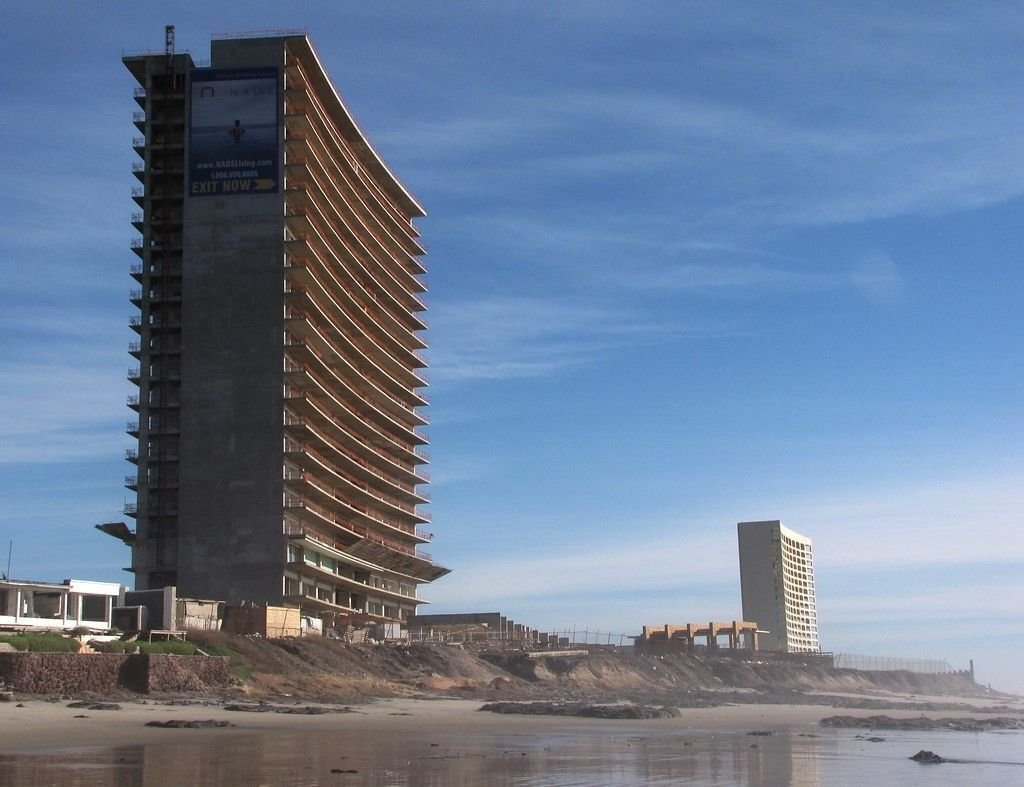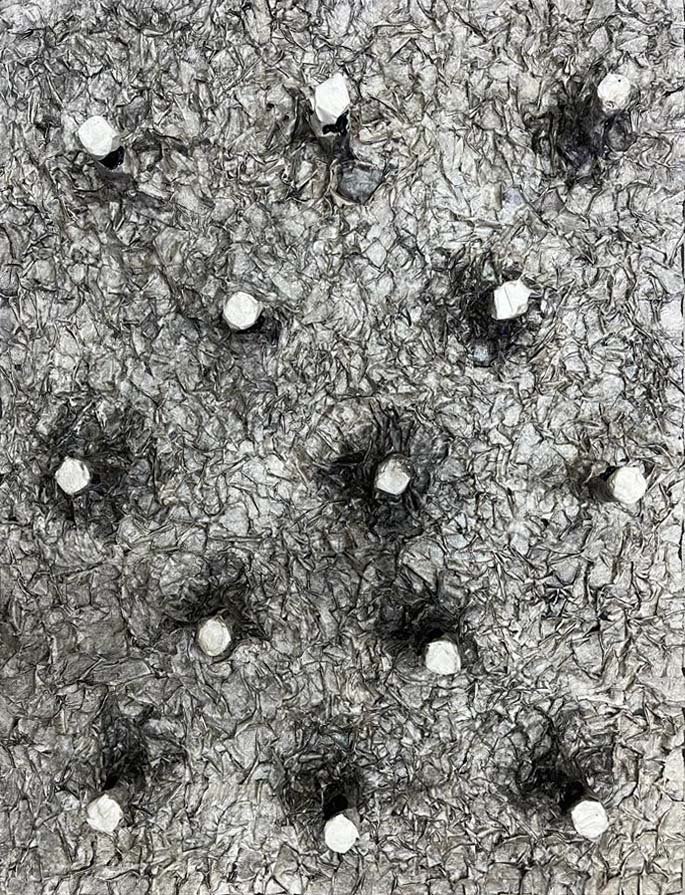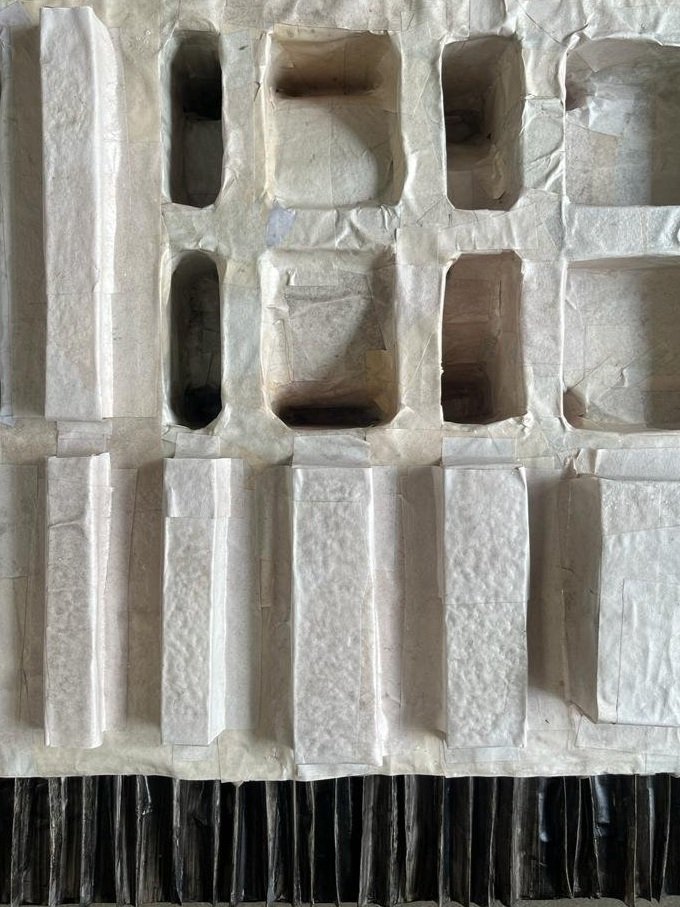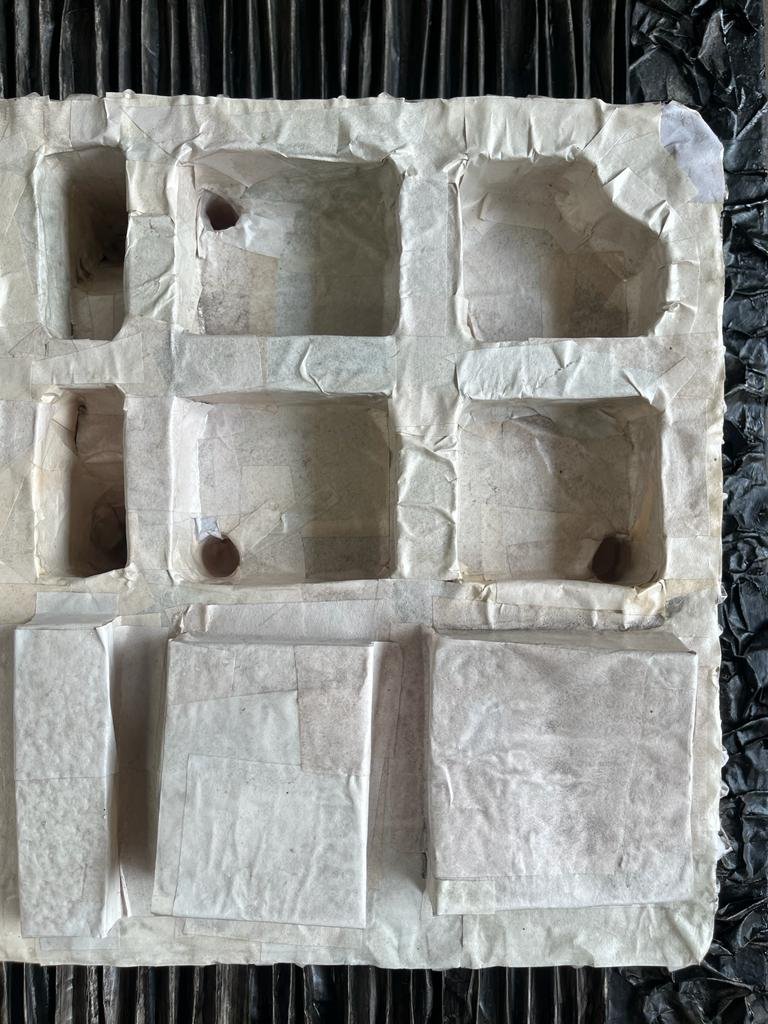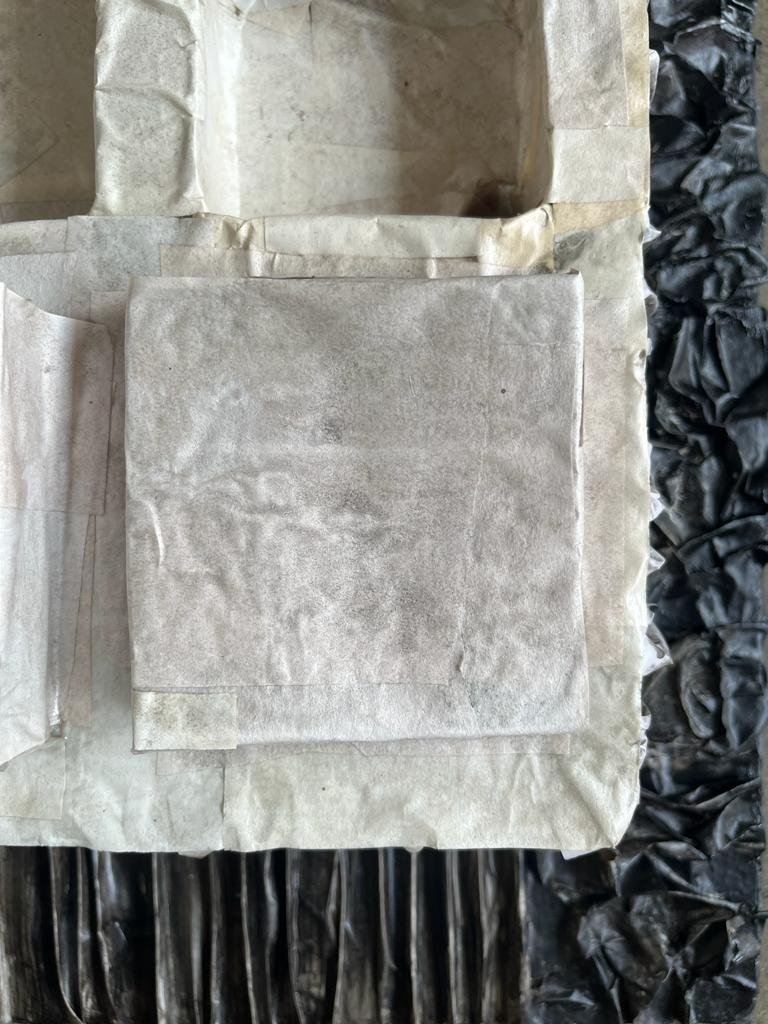46 RENACIMIENTOS
46 Renacimientos is a multi-piece project of forty-six textural paintings in black and white, using paper, wood, plastic, gesso, and ink; each representing a corresponding abandoned architectural project, located throughout ninety miles of coast in Baja California, Mexico, which are now going to be re-developed; celebrating a second chance at life.
Save the Date! November 2, 2024 in San Ysidro, California
What is the COCOTREN?
COCOTREN is an acronym for Coastal Corridor Tijuana-Rosarito-Ensenada, and it is 90 miles of highway connecting the three cities alongside the Pacific Ocean coast. Throughout this corridor, 46 construction projects were halted in 2008 due to the recession and remained abandoned for 15 years.
What is 46 RENACIMIENTOS?
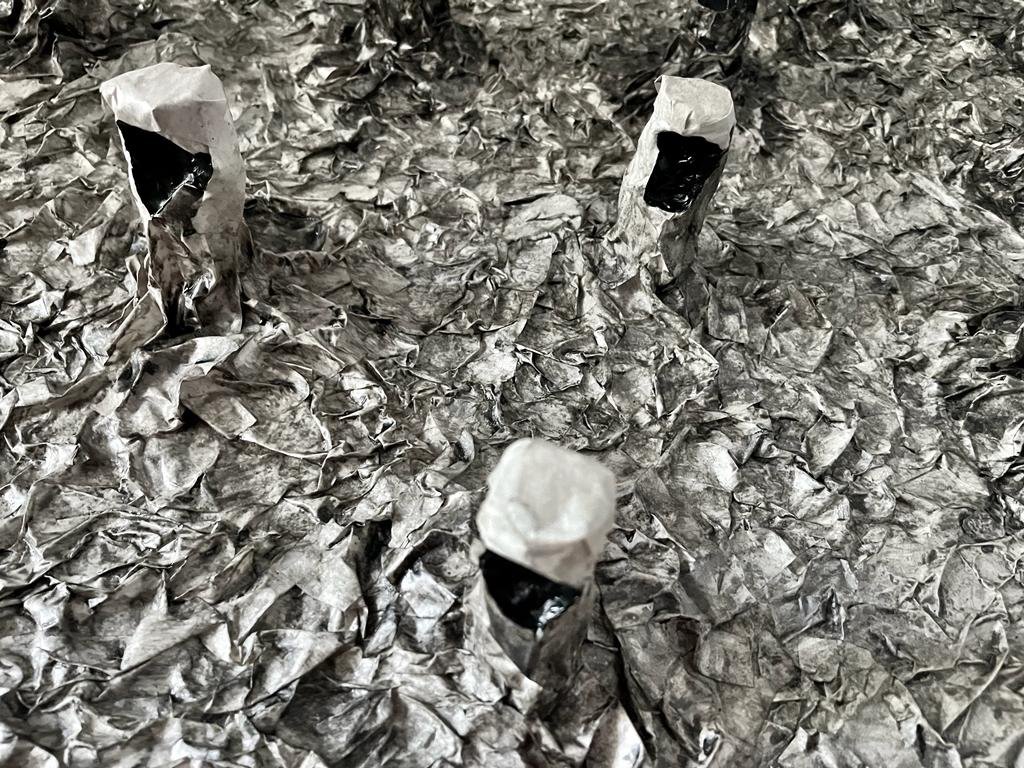
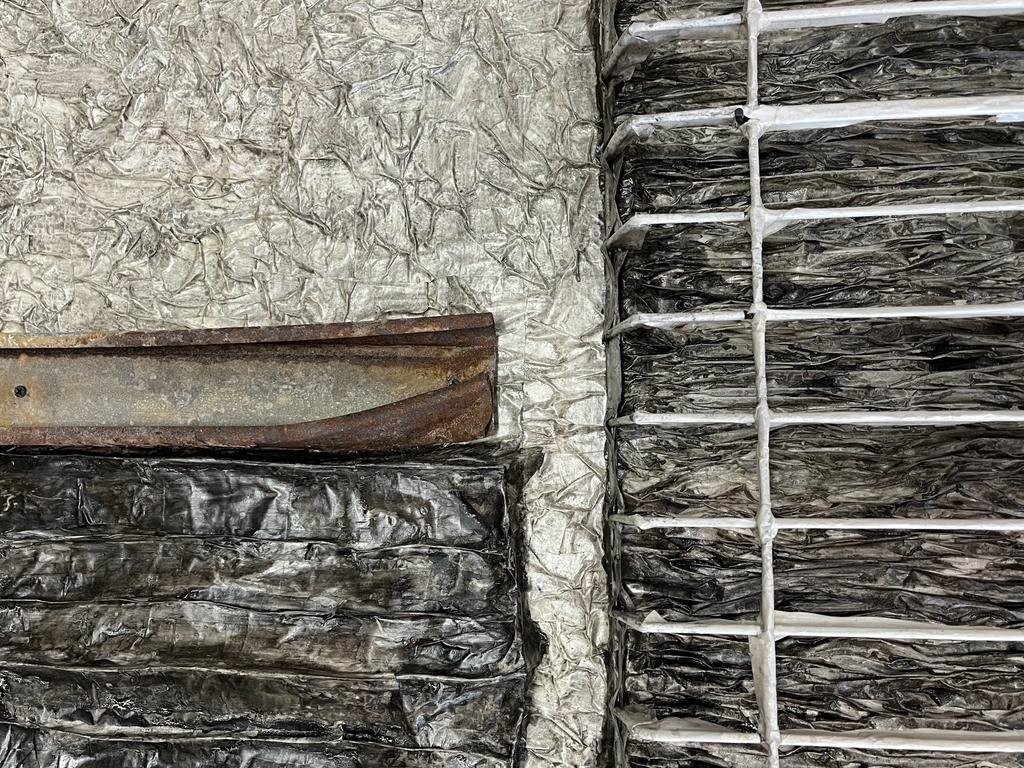
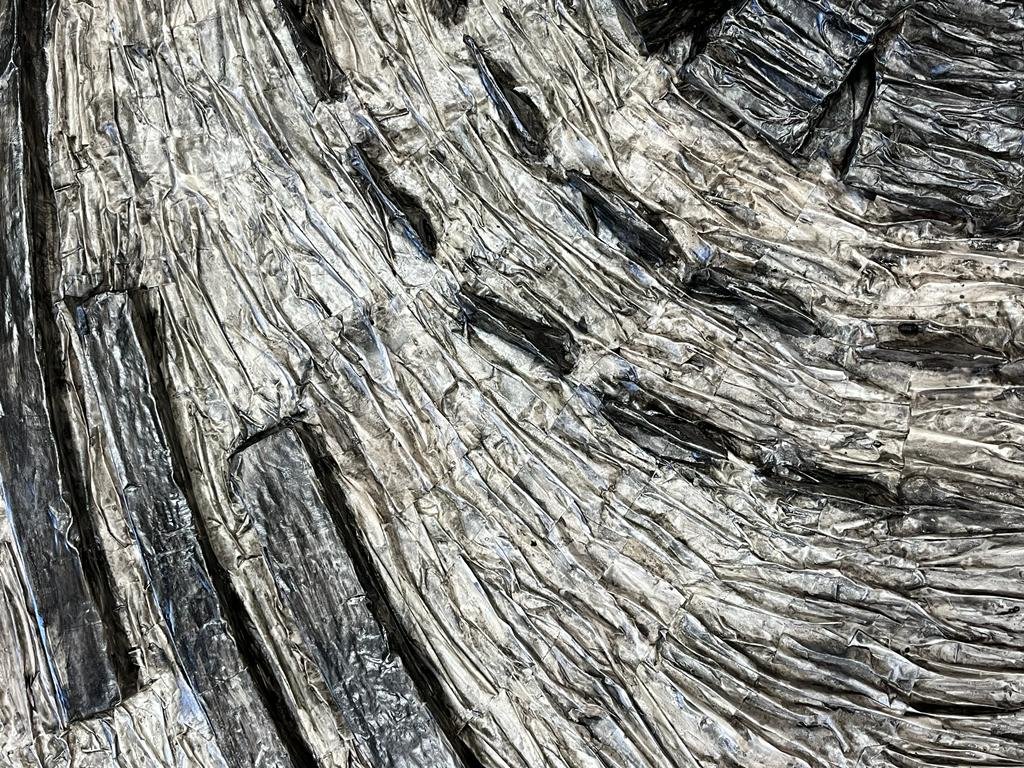
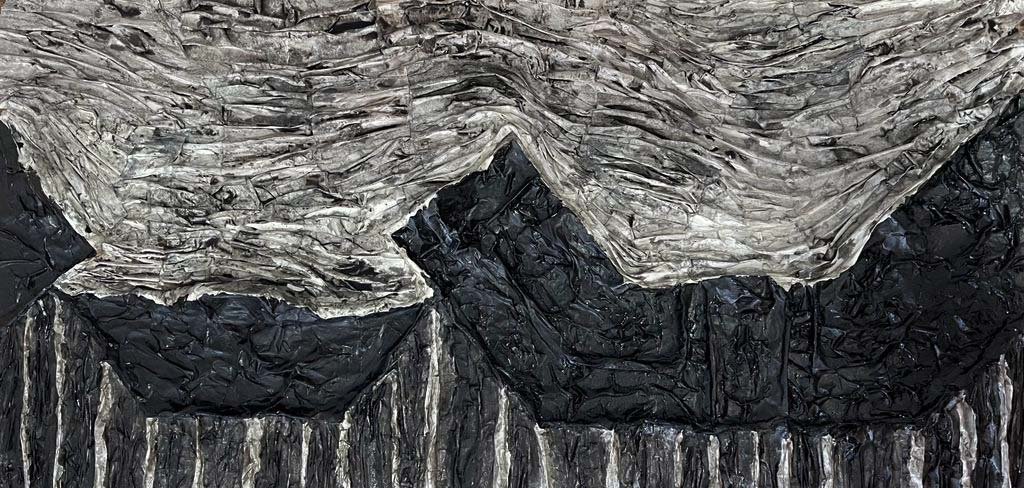
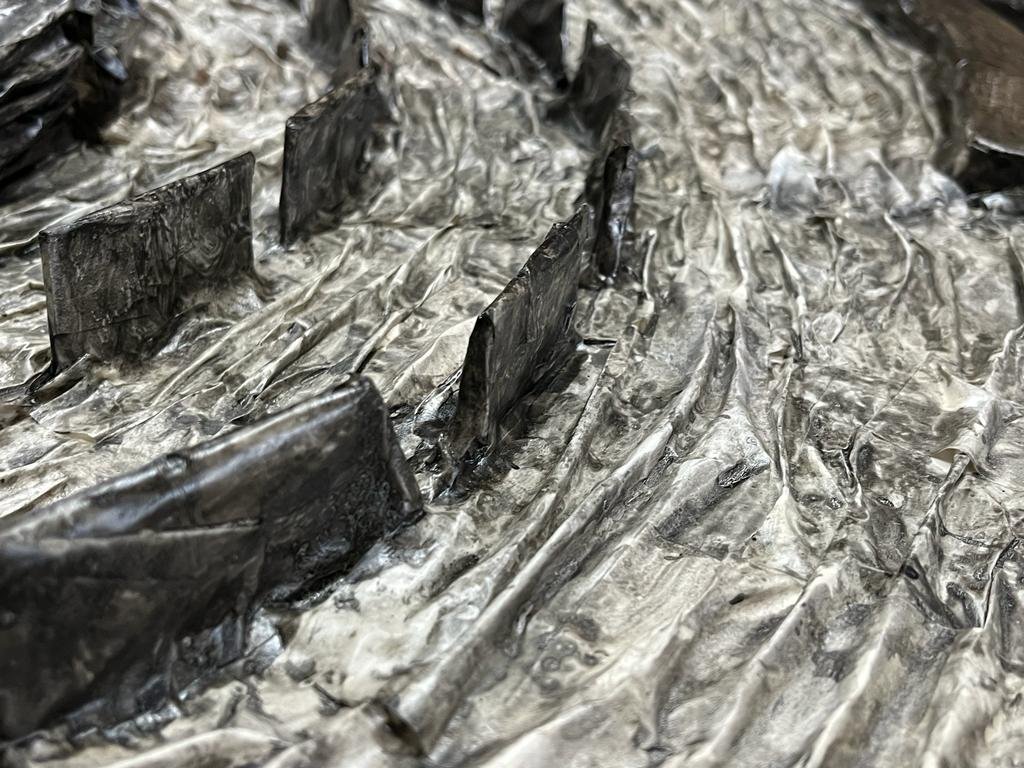
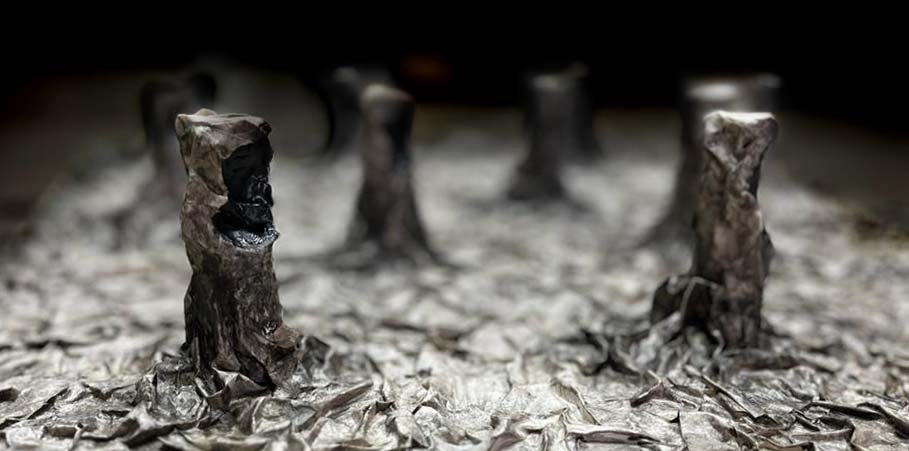
46 Renacimientos is an art project consisting of forty-six sculptural paintings, each corresponding to one of the forty-six abandoned projects down the coast of Baja. Each of these physical art pieces behave as an altar that houses the architectural soul of the building, giving it a place to rest and celebrate its second life. The altars are created using abandoned in a warehouse in San Ysidro, CA. A wood panel is the base for an arrangement of metal and plastic creating the structure underneath the paper layers, all embraced by black gesso and ink on top. Each altar’s geometrical composition emulates the architectural typology of the COCOTREN project it is representing.
Full Project Description:
Unlike the prolonged, silent death experienced by the COCOTREN properties since 2008, this celebration of 46 Renacimientos will be striking and thoroughly documented. Every time a society such as ours undergoes a positive transformation, it is detrimental to dismiss it as a quotidian banality. Instead, it is very important to create a cultural record that captures this architectural uprising, telling our story with excitement through the universal language of art.
46 Renacimientos aspires to contribute towards that cultural record, engaging the neighbors and residents of Baja California in a serious conversation by inquiring: Why did we accept the abandonment of these forty-six projects as our new reality? What do these empty shells mean to us now? Drivers on the Tijuana-Ensenada scenic highway, considered the most beautiful in Mexico, usually just pass by these forgotten buildings, leaving them behind in the rearview mirror. Only the neighbors and commutters see them daily. By creating these altars to the COCOTREN, we can slow down and carefully observe each work, understanding them both independently and as part of an architectural ensemble. 46 Renacimientos attempts to provide dignity and respect to these forty-six developments, so that they are no longer just skeletons on the beach.
The art pieces in 46 Renacimientos were made using previously abandoned materials (wood, metal, paper) similarly discarded in a San Ysidro warehouse. These are now offered a new usage, minimizing environmental impact. Through the assemblage of these materials, 46 Renacimientos connect us with our Mexican tradition of “cartonería” as a manufacturing method. By using this ancestral technique, also known as Papier-mâché, the layers of paper glued on top of each other connect the different pieces underneath each sculpture.
The relationship between the light and darkness created by the material planes of each sculpture is itself what provides the color: a thick dark layer tattoos the shell beneath the paper, in the same way that a sheet delicately covers a carcass. The black reflection of the heavy gesso along with the thinness of the ink organize the remains that live below the surface through pictorial coordinates. Each of the forty-six altars has been created with this monochrome uniform to unify and strengthen their collective message, without compromising the original personality of each three-dimensional work.
Architecture plays the leading role in this chronicle due to how its rigor and processes create a physical manifestation of the soul and spirit of both the properties on the coast and the altars that represent them. Concurrently, texture also has a very important function in this visual narrative, since it is the skin of the architectural spirit being represented. The geographical relief of each altar creates its own landscape on top of each wooden board, using black painted on stretched, folded, and pinched paper, confluencing the softness and fluidity of the paper covering the plastic pieces with the more defined features of the hardware and metal components underneath. All of this contributes to the topographic constitution of each sculpture.


